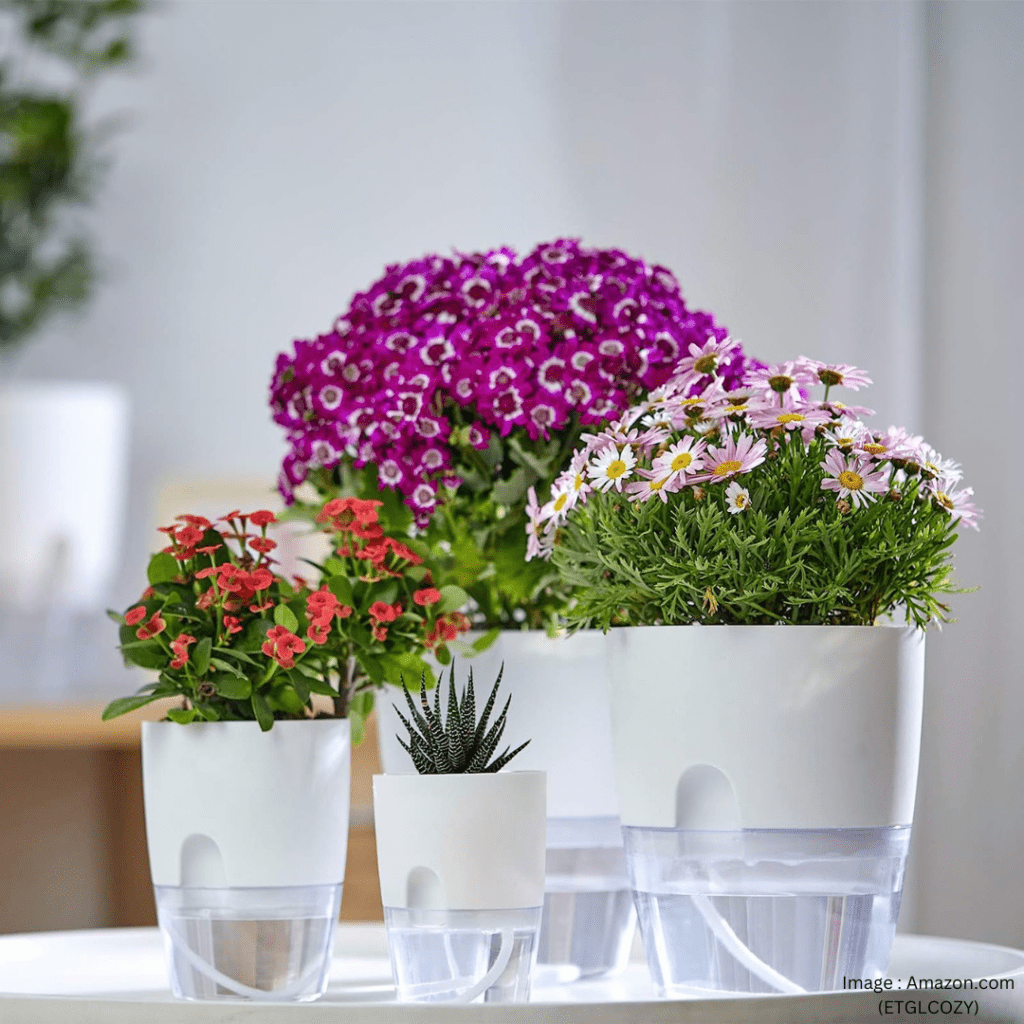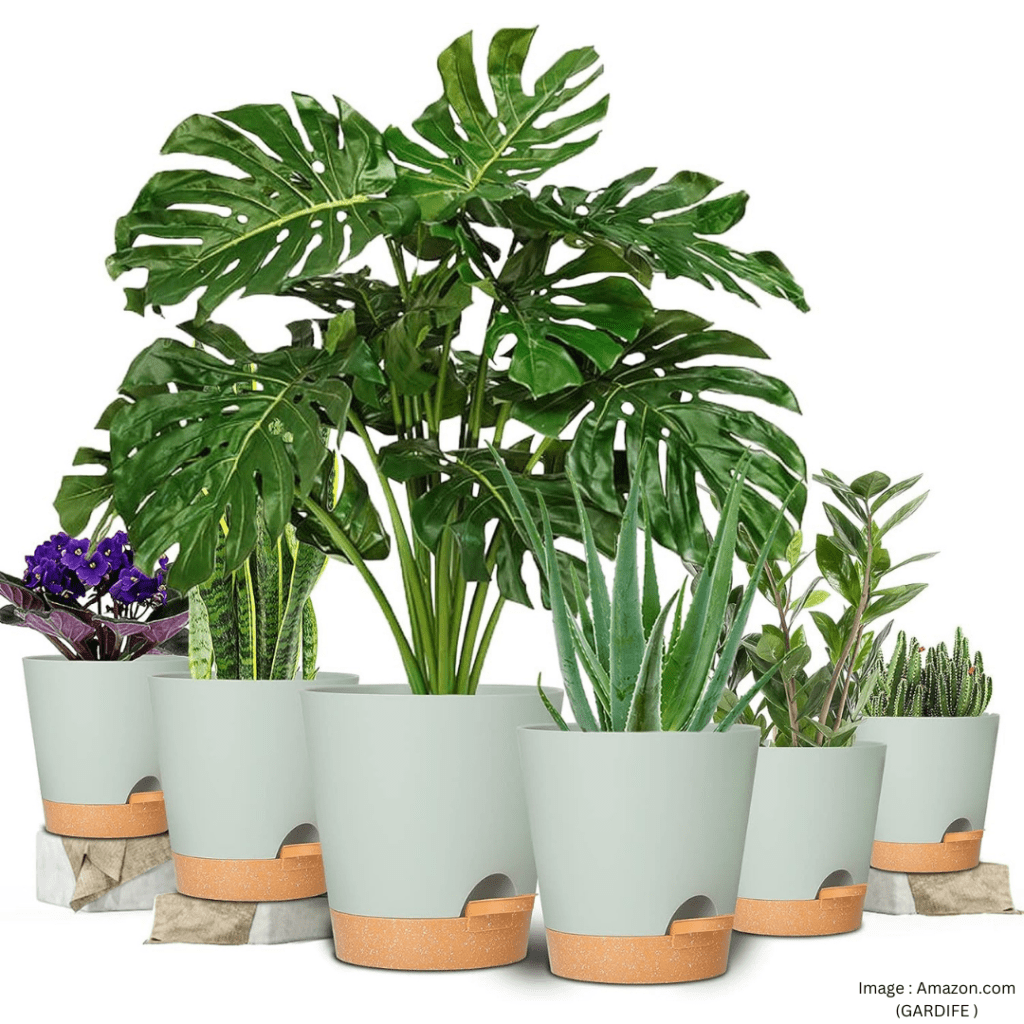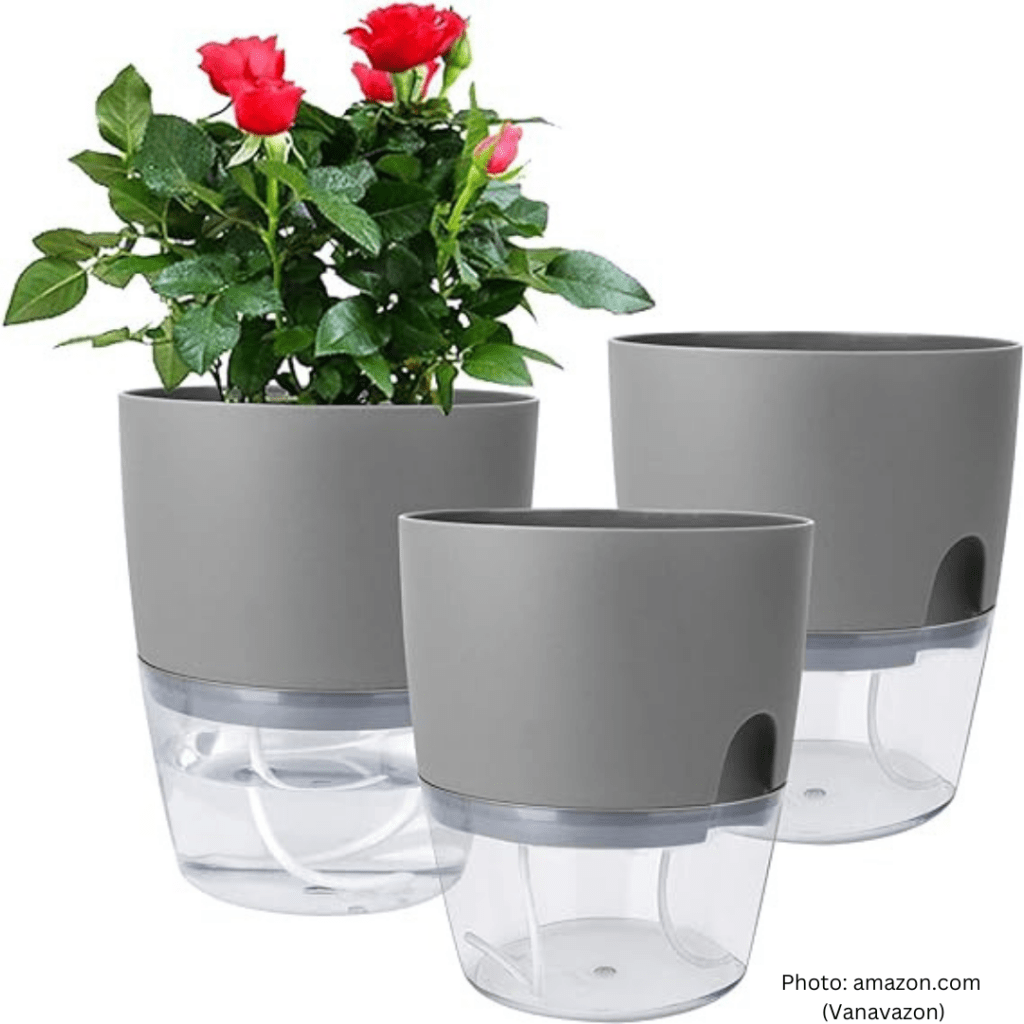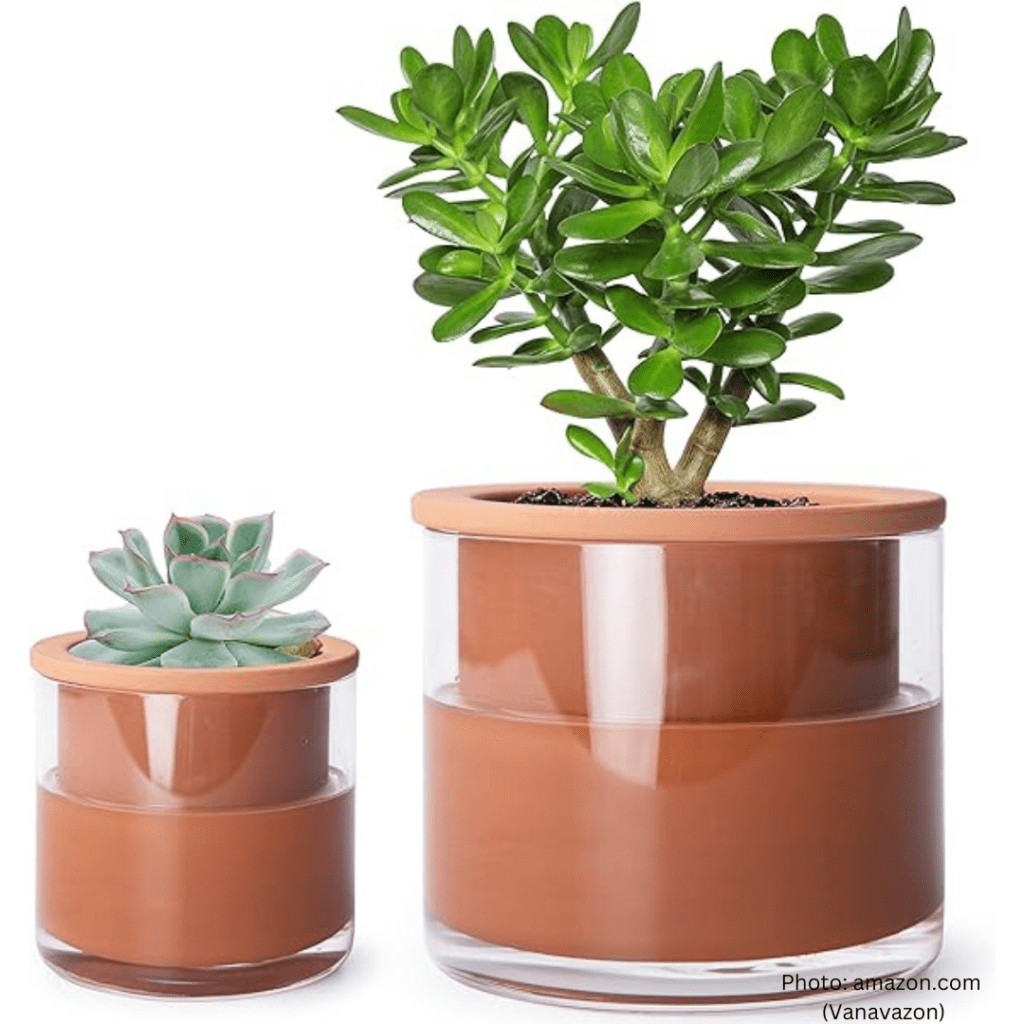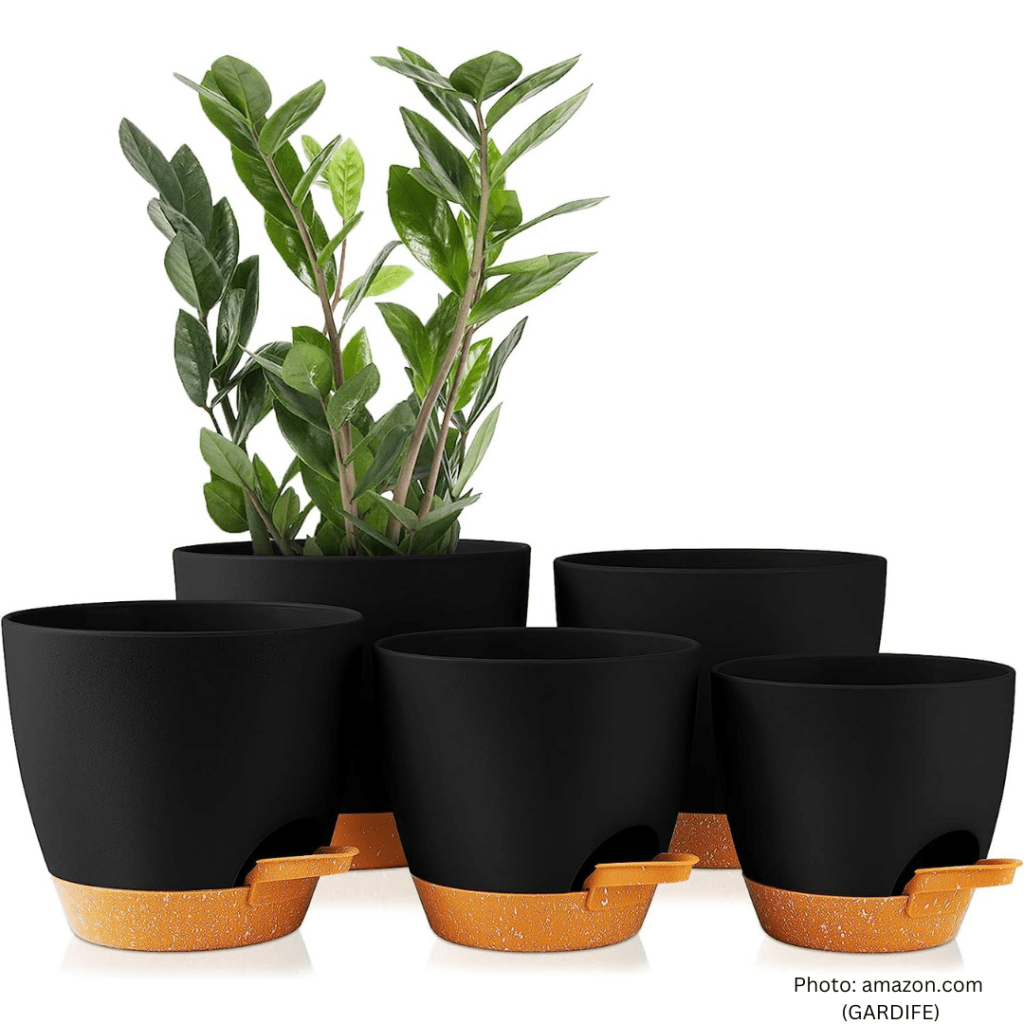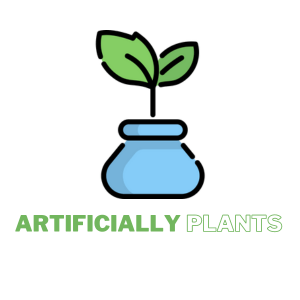Self Watering Pot

What is a self-watering pot?
Self-watering containers are incredibly convenient, and they also increase plant health and water efficiency. Instead of having to monitor the soil’s moisture content and water your plants according to their individual demands, these pots employ wicking action to distribute water from an integrated reservoir, allowing you to water your plants by simply filling off the reservoir.
To kick things off, let’s address the fundamental question: What is a self-watering pot? In simple terms, it’s a container designed to make plant care more convenient. It comes equipped with a reservoir that stores water, allowing the plant to absorb moisture as needed. But there’s more to it than meets the eye. Let’s delve deeper.
How do these pots work?
Self-watering pots operate on a principle known as capillary action. The pot is divided into two compartments: the upper one houses the plant and soil, while the lower one contains the water reservoir. Through a wicking system, water is drawn up into the soil, ensuring that your plants receive a steady supply of moisture. This eliminates the need for daily watering and reduces the risk of over or underwatering.
A growth area, potting soil, a water reservoir, and a wicking system that connects soli to water are all included in the pots. Wicking, also known as capillary action, is how self-watering pots function. The soil wicks up more as the plant roots take up more water, which in turn aids in keeping the soil’s moisture level constant.


